I see you already have a response, which is good of course.
BUT for those who want to use systemjs (like I also do), and not go to webpack, you can still bundle the files. However, it does involve using another tool also (I use gulp).
So... you would have the folowing systemjs config (not in the html, but in a separate file - let's call it "system.config.js"):
(function(global) {
// map tells the System loader where to look for things
var map = {
'app': 'dist/app', // this is where your transpiled files live
'rxjs': 'node_modules/rxjs',
'angular2-in-memory-web-api': 'node_modules/angular2-in-memory-web-api', // this is something new since angular2 rc.0, don't know what it does
'@angular': 'node_modules/@angular'
};
// packages tells the System loader how to load when no filename and/or no extension
var packages = {
'app': { main: 'boot.js', defaultExtension: 'js' },
'rxjs': { defaultExtension: 'js' },
'angular2-in-memory-web-api': { defaultExtension: 'js' }
};
var packageNames = [
'@angular/common',
'@angular/compiler',
'@angular/core',
'@angular/http',
'@angular/platform-browser',
'@angular/platform-browser-dynamic',
//'@angular/router', // I still use "router-deprecated", haven't yet modified my code to use the new router that came with rc.0
'@angular/router-deprecated',
'@angular/http',
'@angular/testing',
'@angular/upgrade'
];
// add package entries for angular packages in the form '@angular/common': { main: 'index.js', defaultExtension: 'js' }
packageNames.forEach(function(pkgName) {
packages[pkgName] = { main: 'index.js', defaultExtension: 'js' };
});
var config = {
map: map,
packages: packages
};
// filterSystemConfig - index.html's chance to modify config before we register it.
if (global.filterSystemConfig) { global.filterSystemConfig(config); }
System.config(config);
})(this);
Then, in your gulpfile.js you would build a bundle like this (using the info from system.config.js and tsconfig.json files):
var gulp = require('gulp'),
path = require('path'),
Builder = require('systemjs-builder'),
ts = require('gulp-typescript'),
sourcemaps = require('gulp-sourcemaps');
var tsProject = ts.createProject('tsconfig.json');
var appDev = 'dev/app'; // where your ts files are, whatever the folder structure in this folder, it will be recreated in the below 'dist/app' folder
var appProd = 'dist/app';
/** first transpile your ts files */
gulp.task('ts', () => {
return gulp.src(appDev + '/**/*.ts')
.pipe(sourcemaps.init({
loadMaps: true
}))
.pipe(ts(tsProject))
.pipe(sourcemaps.write('.'))
.pipe(gulp.dest(appProd));
});
/** then bundle */
gulp.task('bundle', function() {
// optional constructor options
// sets the baseURL and loads the configuration file
var builder = new Builder('', 'dist/system.config.js');
/*
the parameters of the below buildStatic() method are:
- your transcompiled application boot file (the one wich would contain the bootstrap(MyApp, [PROVIDERS]) function - in my case 'dist/app/boot.js'
- the output (file into which it would output the bundled code)
- options {}
*/
return builder
.buildStatic(appProd + '/boot.js', appProd + '/bundle.js', { minify: true, sourceMaps: true})
.then(function() {
console.log('Build complete');
})
.catch(function(err) {
console.log('Build error');
console.log(err);
});
});
/** this runs the above in order. uses gulp4 */
gulp.task('build', gulp.series(['ts', 'bundle']));
So, when running "gulp build", you will get the "bundle.js" file with everything you need.
Sure, you also need a few more packages for this gulp bundle task to work:
npm install --save-dev github:gulpjs/gulp#4.0 gulp-typescript gulp-sourcemaps path systemjs-builder
Also, make sure that in your tsconfig.json you have "module":"commonjs".
Here is my tsconfig.json which is used in my 'ts' gulp task:
{
"compilerOptions": {
"target": "es5",
"module": "commonjs",
"moduleResolution": "node",
"sourceMap": true,
"emitDecoratorMetadata": true,
"experimentalDecorators": true,
"removeComments": false,
"noImplicitAny": false
},
"exclude": [
"node_modules",
"typings/main",
"typings/main.d.ts"
]
}
Then, in your html file you only need to include this:
<!-- Polyfill(s) for older browsers -->
<script src="node_modules/es6-shim/es6-shim.min.js"></script>
<script src="node_modules/zone.js/dist/zone.js"></script>
<script src="node_modules/reflect-metadata/Reflect.js"></script>
<script src="dist/app/bundle.js"></script>
And that's it... I got from 600 requests, 4mb in about 5 seconds... to 20 requests, 1.4mb in 1.6 seconds (local development machine). But these 20 requests ~1.4mb in 1.6 seconds also include some other js and css that the admin theme came with plus a few html templates that get required on the first load, I prefer to use external templates - templateUrl: '', instead of inline ones, written in my component.ts file.
Sure, for an app that would have millions of users, this still wouldn't be enough. Also server-side rendering for initial load and cache system should be implemented, I actually managed to do that with angular universal, but on Angular2 beta (took about 200-240 milliseconds to load the initial render of the same admin app that above takes 1.6 seconds - I know: WOW!). Now it's incompatible since Angular2 RC came out, but I'm sure the guys doing universal will get it up to speed soon, specially since ng-conf is coming up. Plus, they're also planing to make Angular Universal for PHP, ASP and a few other - right now it's only for Nodejs.
Edit:
Actually, I've just found out that on NG-CONF they said Angular Universal already supports ASP (but it doesn't support Angular2 > beta.15 :)) ... but let's give them some time, RC just came out a few days ago

